Pré, près, prêt, pré

169 x 138 cm
Cristalli di carta is part of the series named Citta di carta, literally translated as "paper town". When Marion Baruch found this left-over of white fabric, she imagined a map of a city. The represented area looked ephemeral and fragile like paper, because of its delicate shapes. The title, in addition to evoking her subject, refers to a process in geography that consists of adding a fictitious city to a map to protect it from plagiarism. In this way, Cristalli di carta materially represents an imaginary and ephemeral city and creates a link between the remnants of fabric and a chimerical space fantasized by the artist.
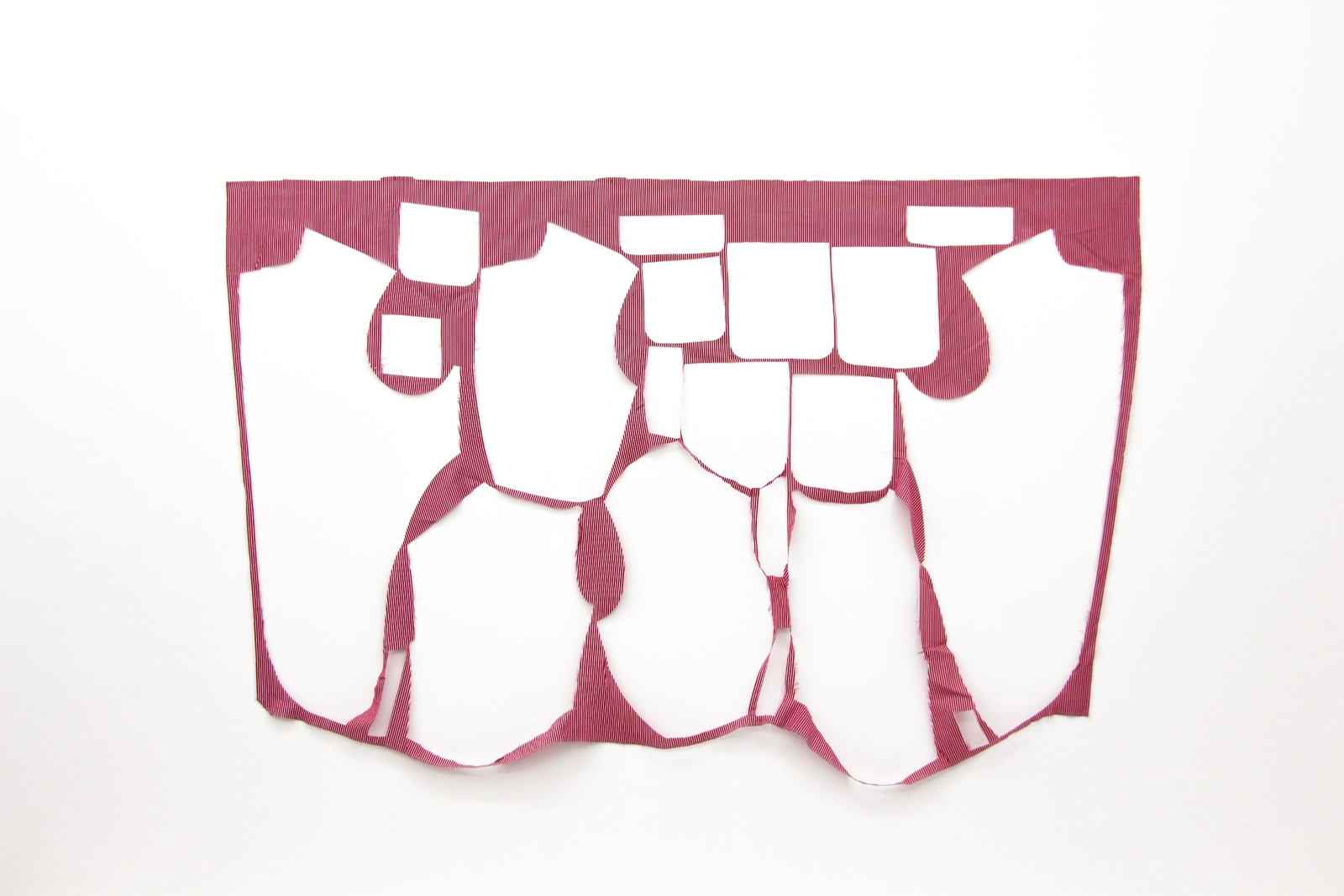
100 x 154 cm
Since the end of the 2000s, Marion Baruch has made a major artistic shift by taking an interest in left-overs of fabric from the textile industry. From this material, she has created artworks that are both sculptures and pictorial compositions. She notably emphasizes on the way the fabric reconstructs the space when it is hung. At the beginning of this new artistic cycle, she conceived her artworks by spontaneously quoting art history, from painting to more conceptual works. Le paysage n'est nulle part is an ironic nod to classical paintings. Marion Baruch uses its traditional horizontal format although there is nothing narrative about it. It is only a poetic reference.

100 x 146,5 cm
Marion Baruch has been suffering from a sight-damaging disease since the 2000s. This physical constraint leads her to apprehend her artworks as a whole without really focusing on the details. She is interested in the general impression she has of the shapes generated by the passage of the textile industry on the fabric. She deciphers, invents and transcribes this particular language related to our society. The variations in the drawings, particularly the opposition between the frame and the cut-outs fascinate the artist who creates works that become sculptures as well as pictorial compositions.
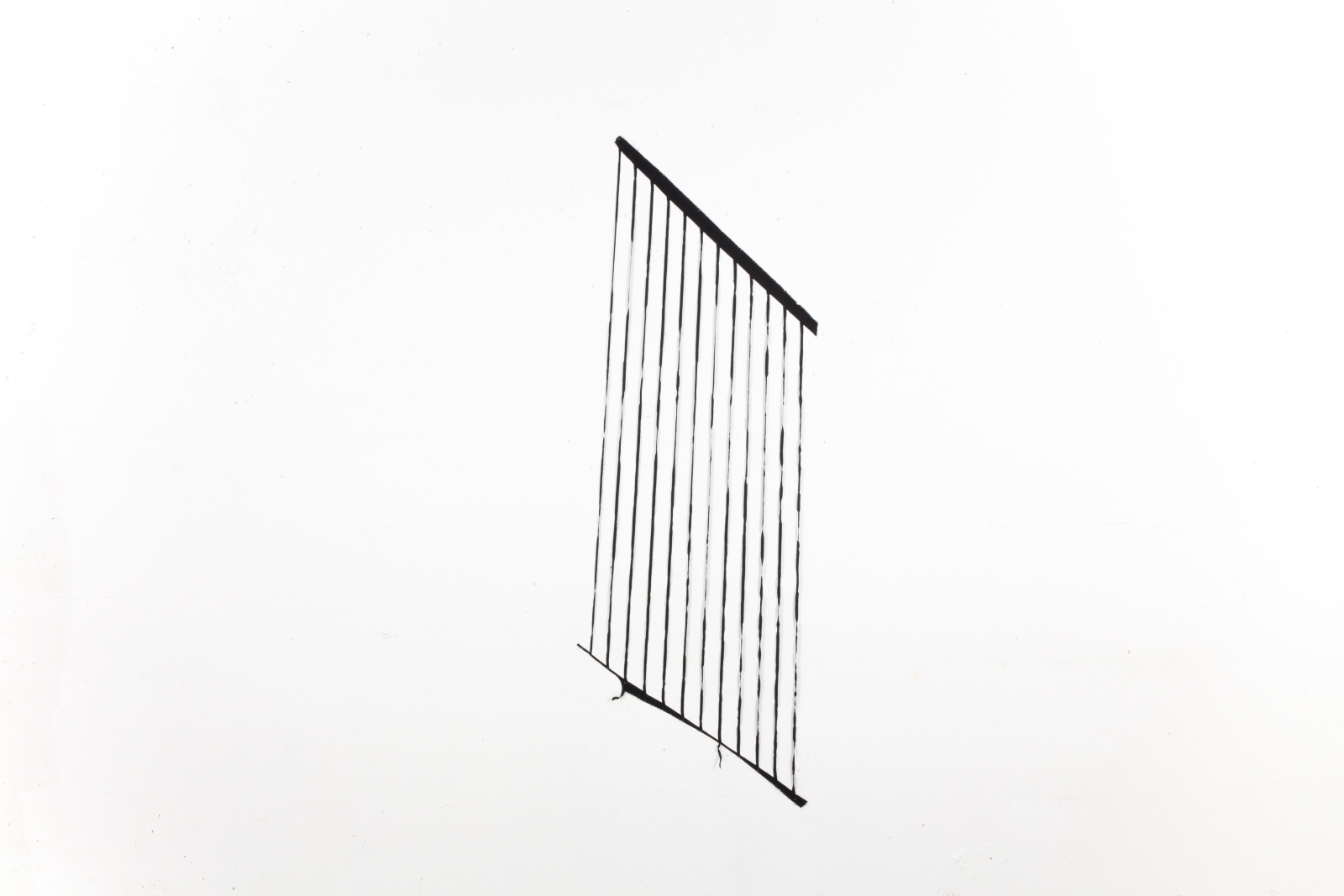
133 x 55 cm
After a long period practicing relational art, Marion Baruch has made a major artistic shift by returning to formal art from the end of the 2000s. Creating artworks from remnants of fabric collected in the Milanese textile industry, she initiated this new artistic cycle by quoting the great masters of modern art who influenced her. She then turned to portraits and music references. In the Arpa series, the artist produces a resonance between the drawings of the fabric and the stringed instruments, thus emphasizing on the analogy between architecture and music.
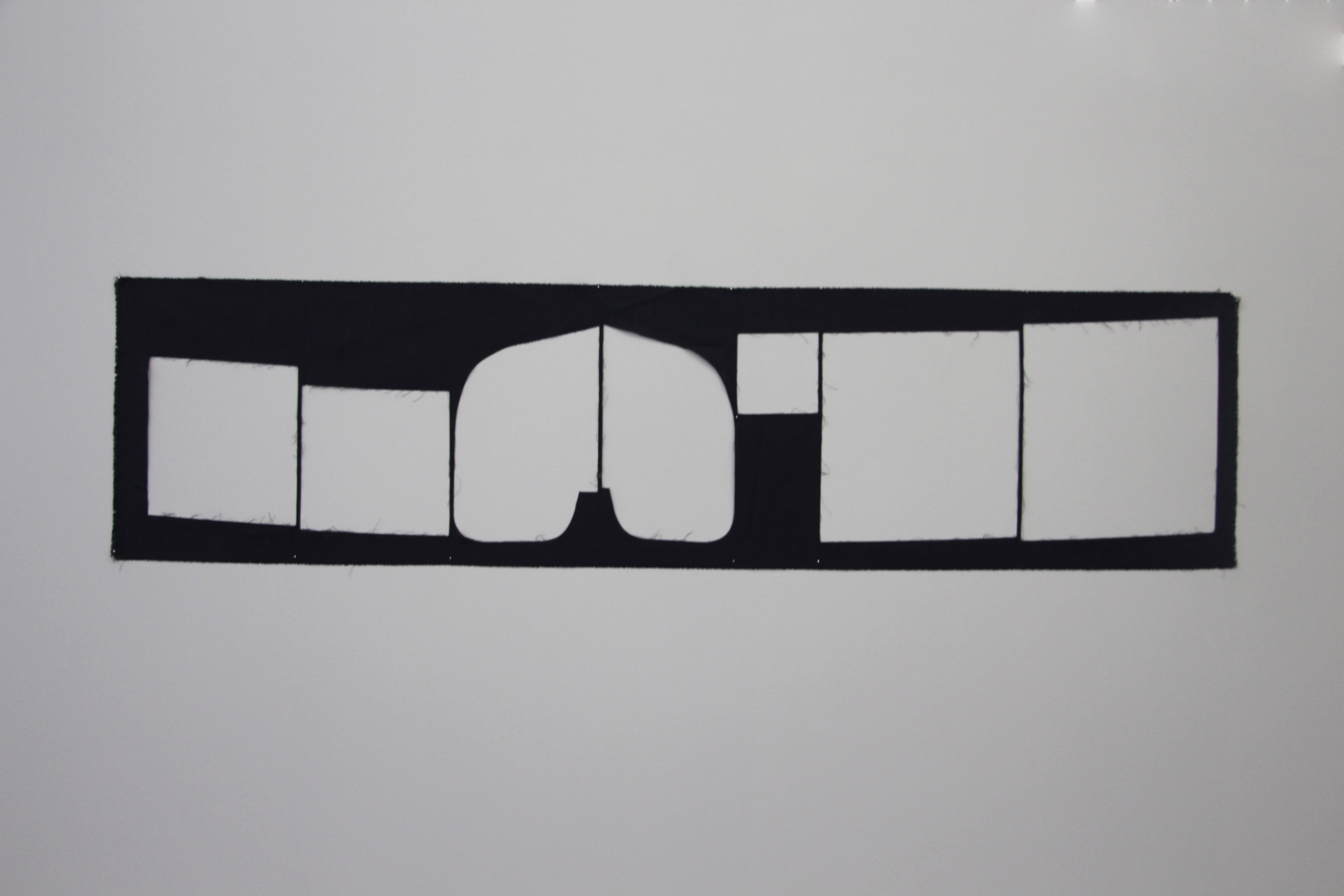
37,5 x 157 cm
After a long period practicing conceptual then relational art, Marion Baruch encountered physical difficulties linked to her advanced age. Hence, she operated a major turning point in her career at the end of the 2000s. She returns toward formal art, and discovers the pictorial potential of fabric remnants she collects from the textile industry. In this new artistic cycle, her first move is to link her work on these materials fated to oblivion with the great master of modern art who influenced her. Marion Baruch thus starts to name her artwork by dedicating them to artists she loves or she has loved, like spontaneous and free quotations to art history.

176 x 54 cm
After a long period practicing conceptual then relational art, Marion Baruch encountered physical difficulties linked to her advanced age. Hence, she operated a major turning point in her career at the end of the 2000s. She returns toward formal art, and discovers the pictorial potential of fabric remnants she collects from the textile industry. In this new artistic cycle, her first move is to link her work on these materials fated to oblivion with the great master of modern art who influenced her. Marion Baruch thus starts to name her artwork by dedicating them to artists she loves or she has loved, like spontaneous and free quotations to art history.
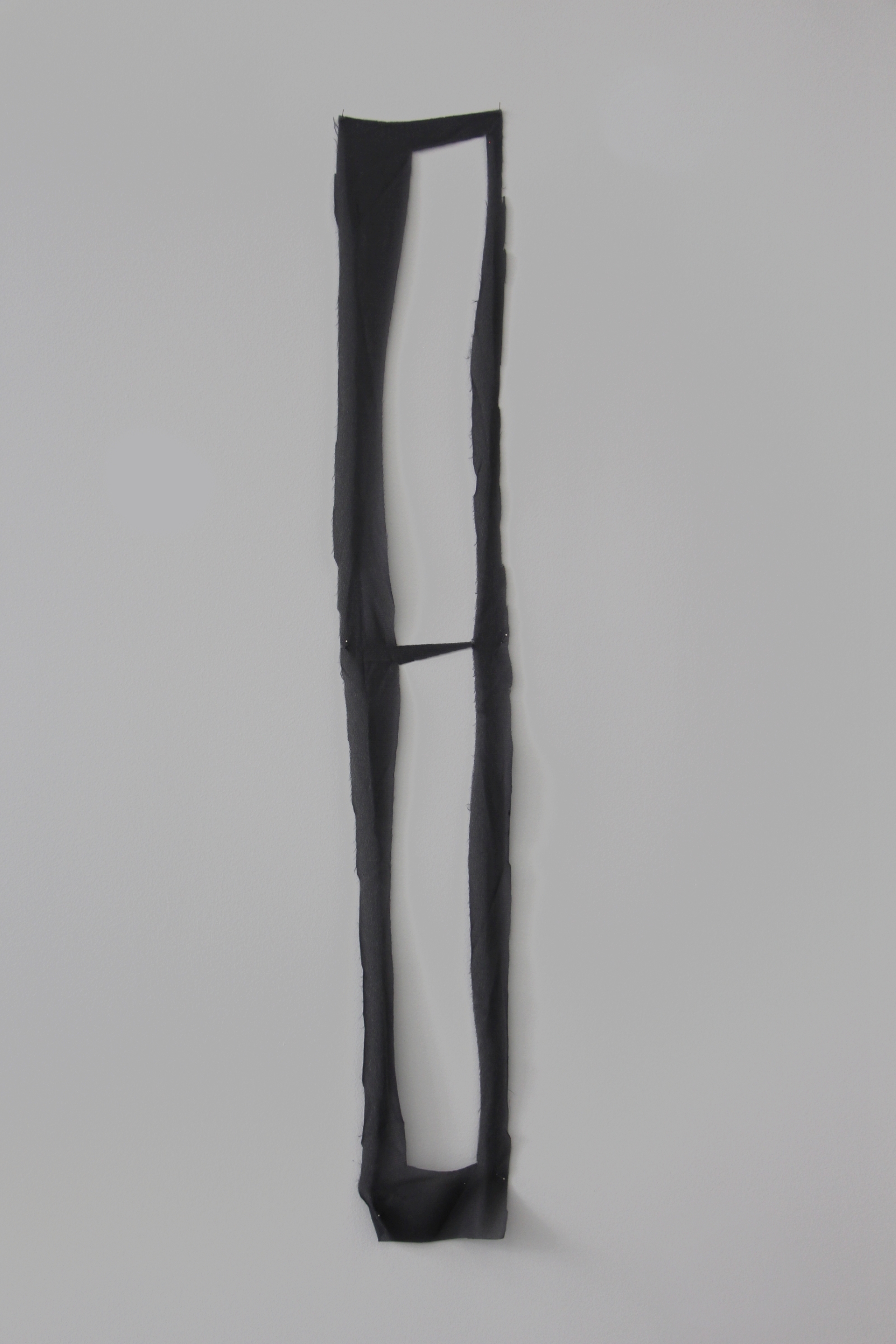
104 x 15 cm
After a long period practicing conceptual then relational art, Marion Baruch encountered physical difficulties linked to her advanced age. Hence, she operated a major turning point in her career at the end of the 2000s. She returns toward formal art, and discovers the pictorial potential of fabric remnants she collects from the textile industry. In this new artistic cycle, her first move is to link her work on these materials fated to oblivion with the great master of modern art who influenced her. Marion Baruch thus starts to name her artwork by dedicating them to artists she loves or she has loved, like spontaneous and free quotations to art history.
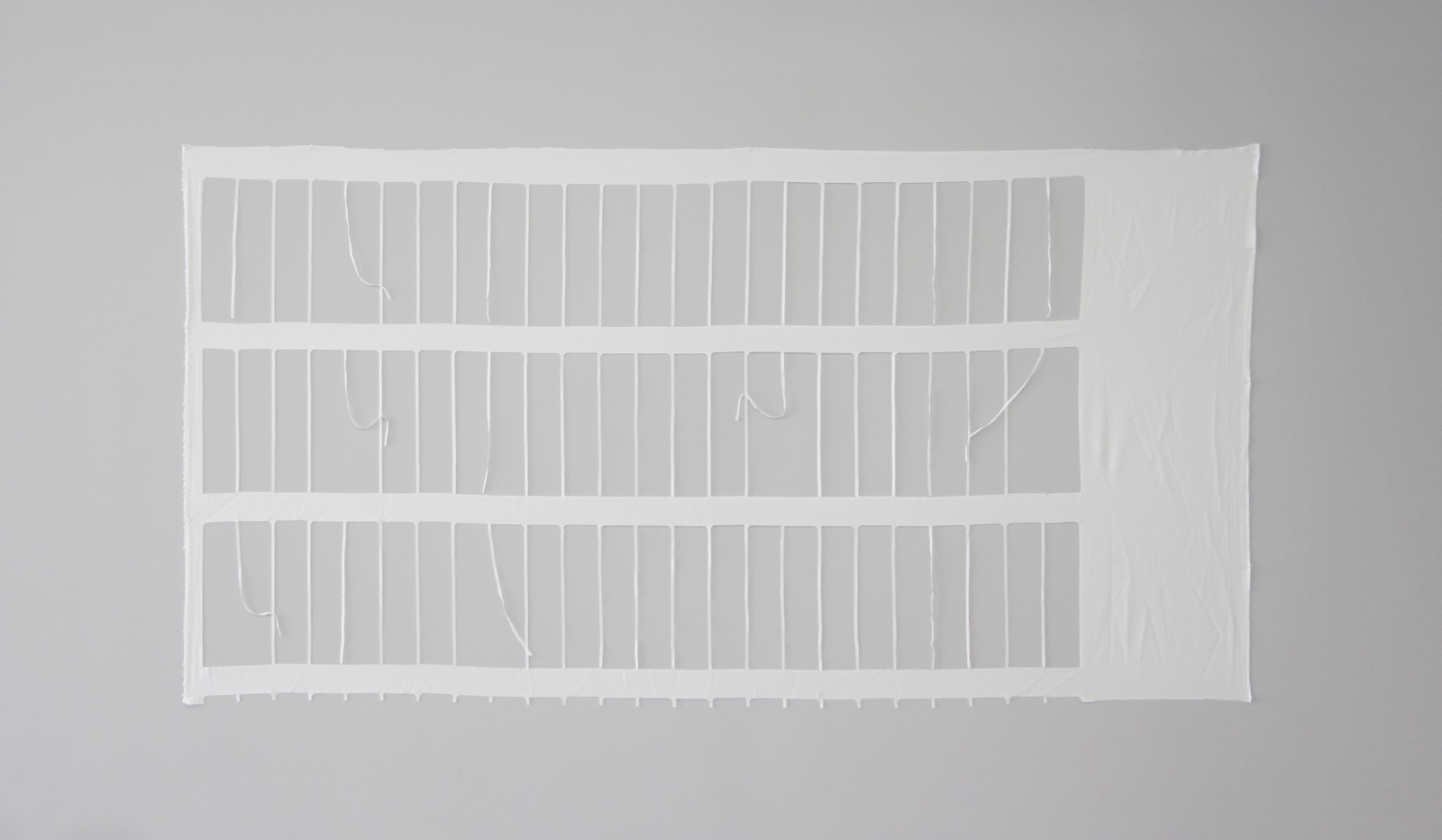
79,5 x 155 cm
Codes and language are very central to Marion Baruch's work. The scraps of fabric she uses to create her works are themselves a form of language that prints the body, but also reflects the productive and industrial society. Numérologie is part of a series named "variation" and refers to a set of beliefs that attributes characteristics to numbers, making interpretations vary according to the context. These minor variations interest the artist in her work. The seemingly regular patterns actually constitute a set of oscillations that dance differently depending on the space in which the work is hung. Chance is thus at the centre of the variation mechanism, producing a slightly different work each time it is shown.
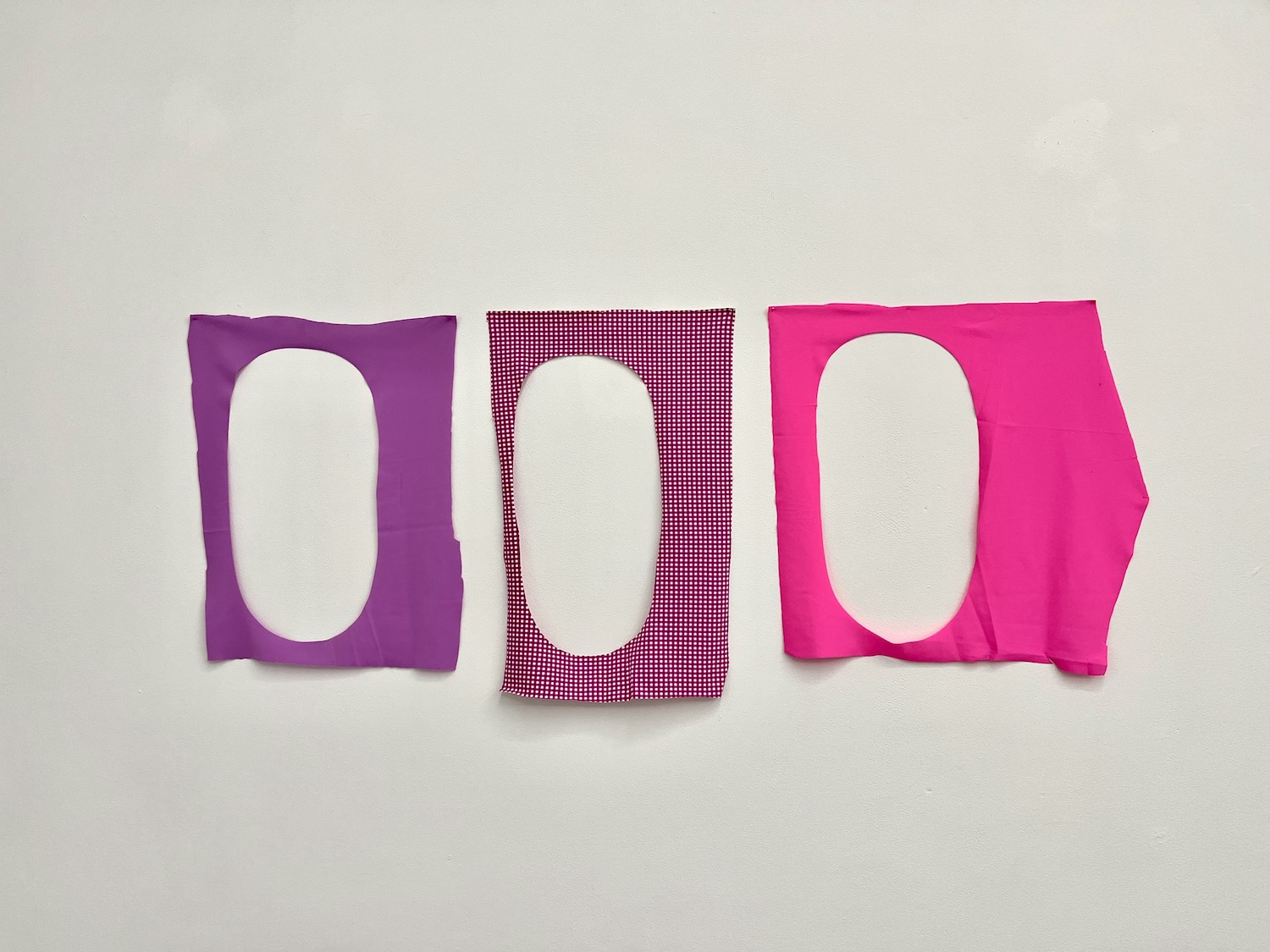
48 x 119 cm
The triptych Tre Ovali, created in 2015 for an exhibition in Italy, consists of three scraps of fabric with empty ovals in their centre. Marion Baruch imagined these shapes as small objects intended for sale, conceptually creating a small shop. As often with the artist, this relationship between the void - here these three holes - and its imaginary function ironically creates a dialogue to make these scraps destined for oblivion into consumer products; or how to make fun of over-consumption by selling "nothing".
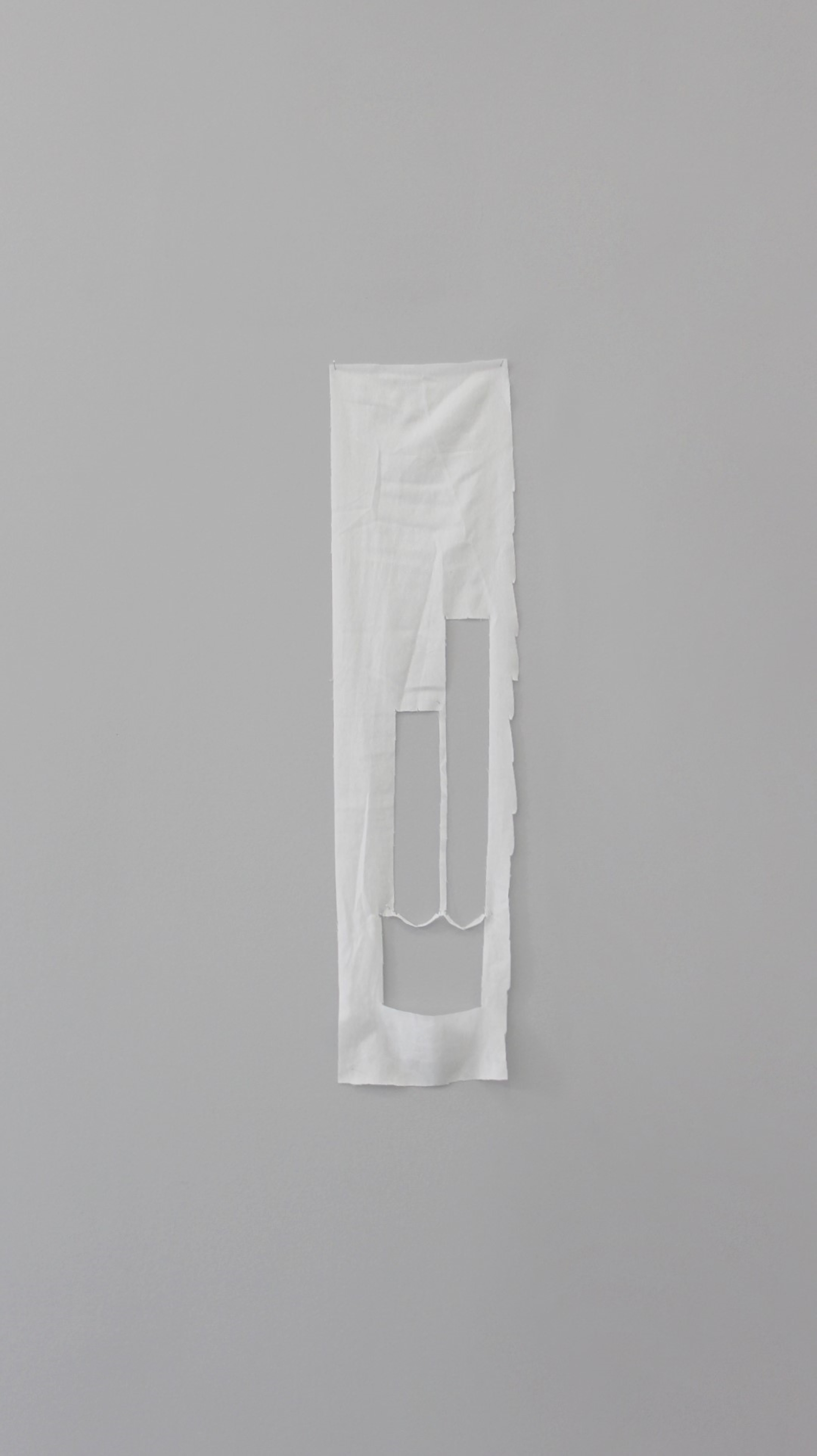
66 x 16,5 cm
After a long period practicing conceptual then relational art, Marion Baruch encountered physical difficulties linked to her advanced age. Hence, she operated a major turning point in her career at the end of the 2000s. She returns toward formal art, and discovers the pictorial potential of fabric remnants she collects from the textile industry. In this new artistic cycle, her first move is to link her work on these materials fated to oblivion with the great master of modern art who influenced her. Marion Baruch thus starts to name her artwork by dedicating them to artists she loves or she has loved, like spontaneous and free quotations to art history.
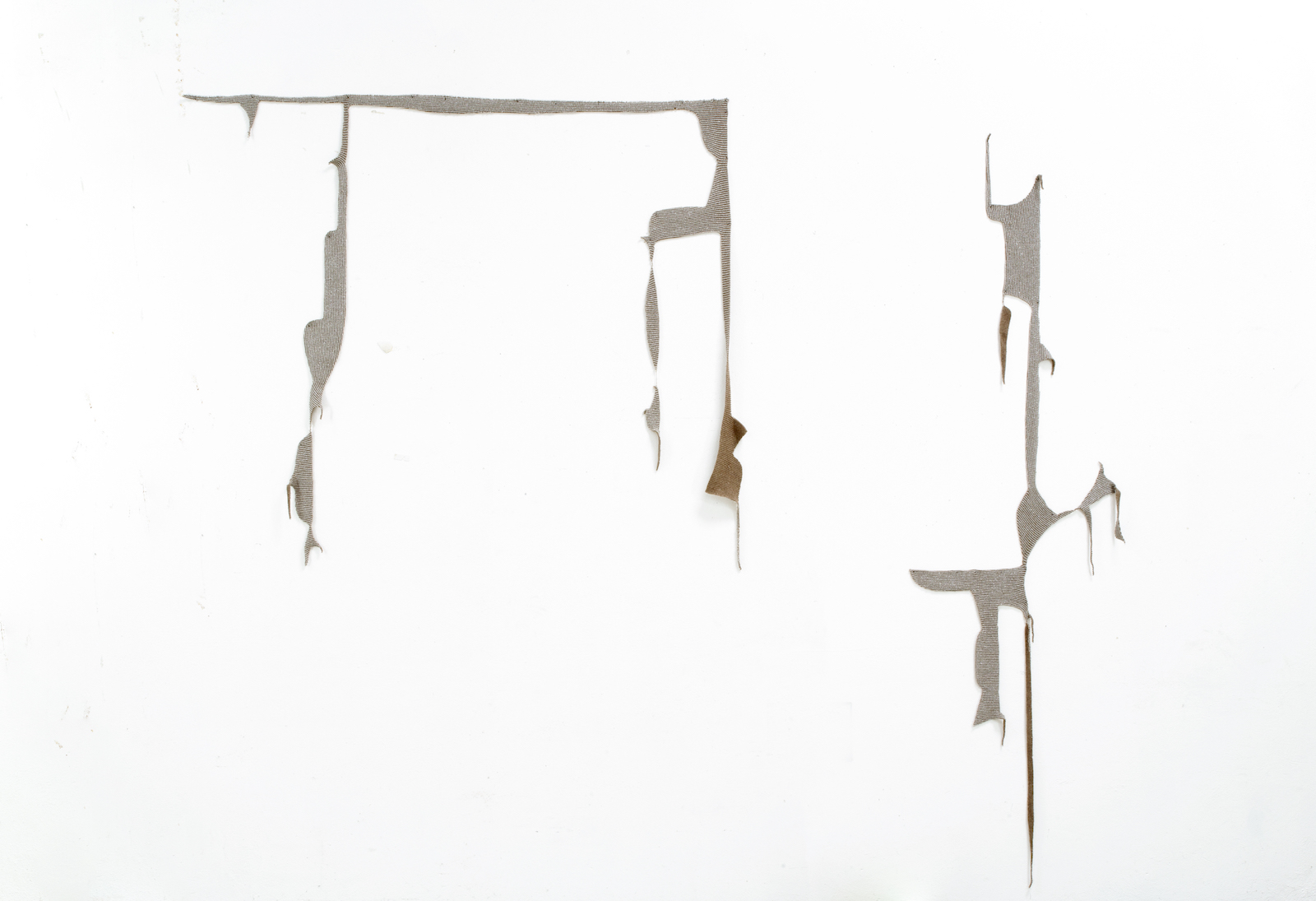
283 x 298 cm
©Noah Stolz
Marion Baruch produces artworks from fabric remnants collected in the textile industry. She has made a series entitled "variations", which includes identical textile leftovers brought together and hung differently. Hence, the forms complement each other in the space and memory to create a harmonious ensemble. In the same way, she has produced a series named "extension", where the left-overs continue with each other, notably when they have the same cuts although they are ripped or separated. Zusammen means together in German. Although it does not refer to a couple, this title assembles this diptych like a union, where each part echoes the other like a common interactive story.
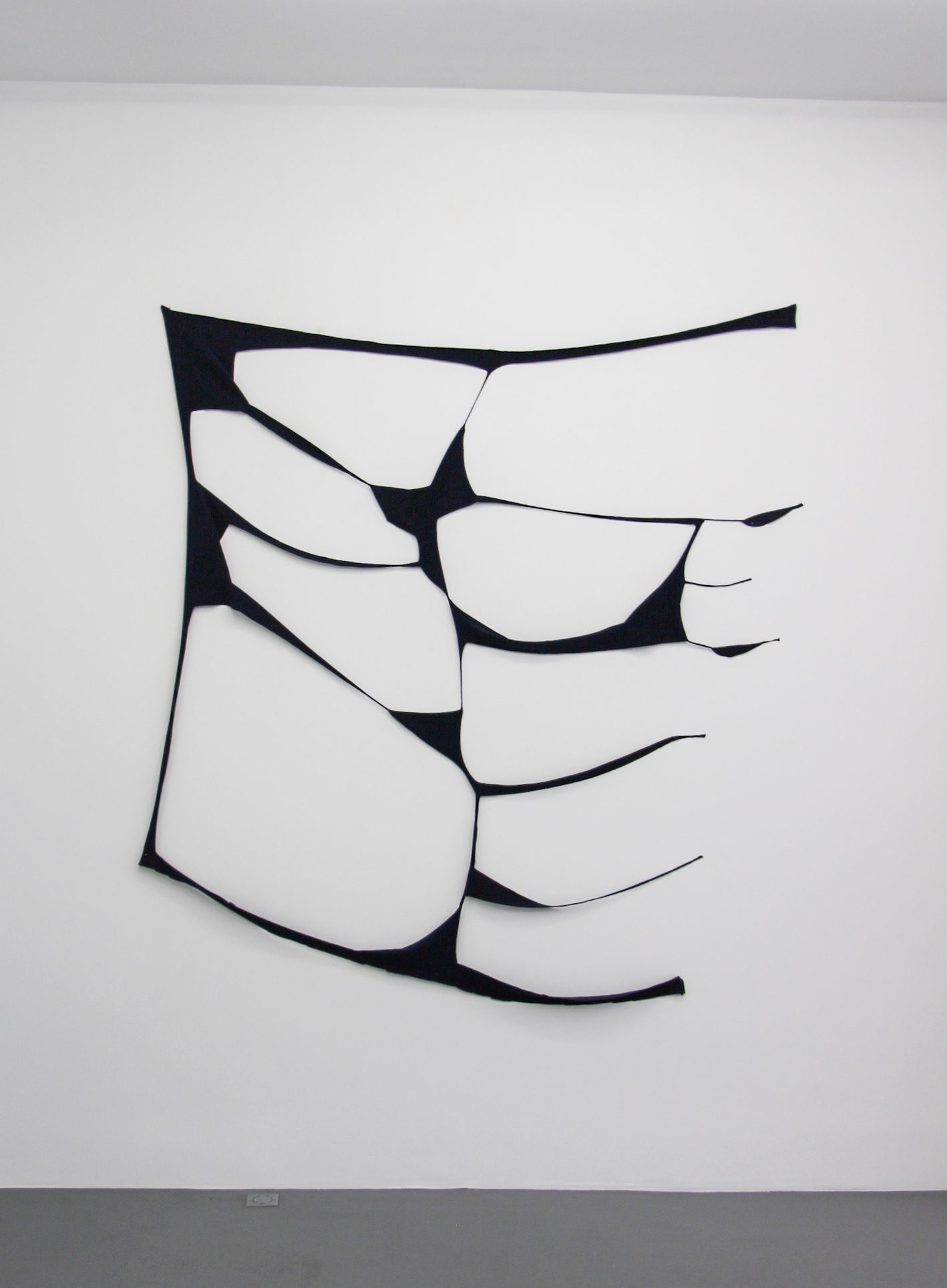
199 x 186,5 cm
Marion Baruch's work on remnants from the textile industry refers to a certain nomadism associated with materials and especially fabric. Her sculptures capture the negative of clothes, designed for human and consumption. Nevertheless, this negative she uses follows a very different path, and travels in another realm it was initially supposed to. Positive and negative, emptiness and fullness are intimately connected and complementary for the artist. In Mon corps où es-tu ?, she refers to one of her performances of the similar name carried out in 2009 when she practiced relational art. She had emptied out her apartment in order to fill the place differently by inviting strangers. For her 80th birthday, she furnished a space with boxes of pharmaceuticals, emphasizing the evolution of her aging body. Actually, relationships with others and the body are permanent in Marion Baruch's work.
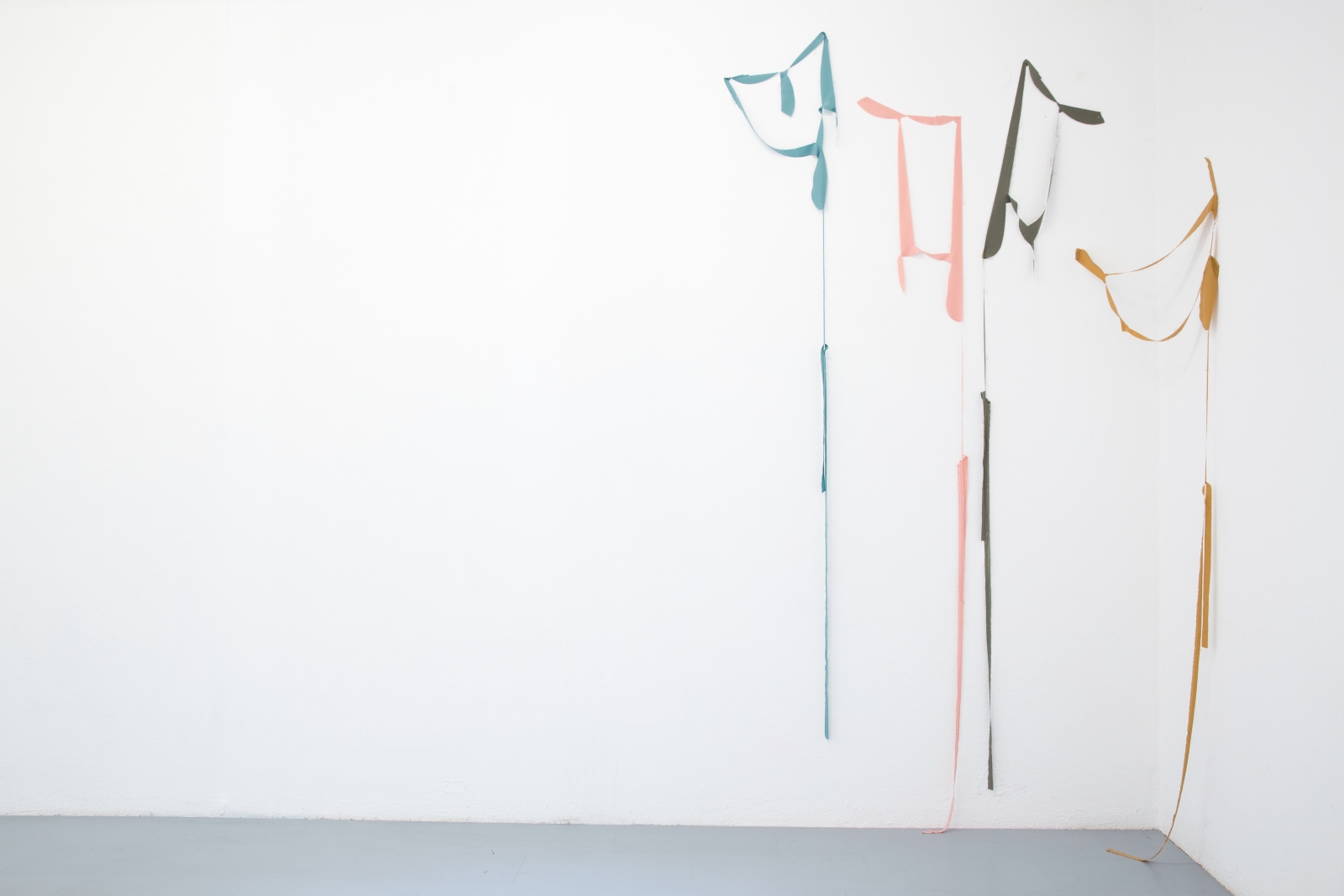
4 parts - 300 x 320 cm (approximatly) various dimensions
©Noah Stolz
Flowers remain a very rare subject in Marion Baruch's work because she does not particularly like their bucolic pattern. Originally, La vitesse des fleurs was supposed to depict kites. However, the artist was not convinced by this idea. When she hung them on the wall, she discovered that these shapes behaved like flowers with an ephemeral and ethereal aspect. The title accentuates the fleeting aspect of these plants, by including the notions of fragility and life, growth and evolution.

77 x 29 cm
Since the 2010s, Marion Baruch has produced artworks from fabric remnants collected in the Italian textile industry. They become sculptures as well as pictorial compositions. She selects forms and materials, and works on the way the fabric occupies and reconstructs the space. Literally meaning "the self-confident little ones", I piccoli sicuri di sé is an art piece that did not resonate with her at first. Nevertheless, the more she observed it, she grew attracted to its shape and small size. It inspired her this title, as she could not resist the self-confidence the artwork brought out.
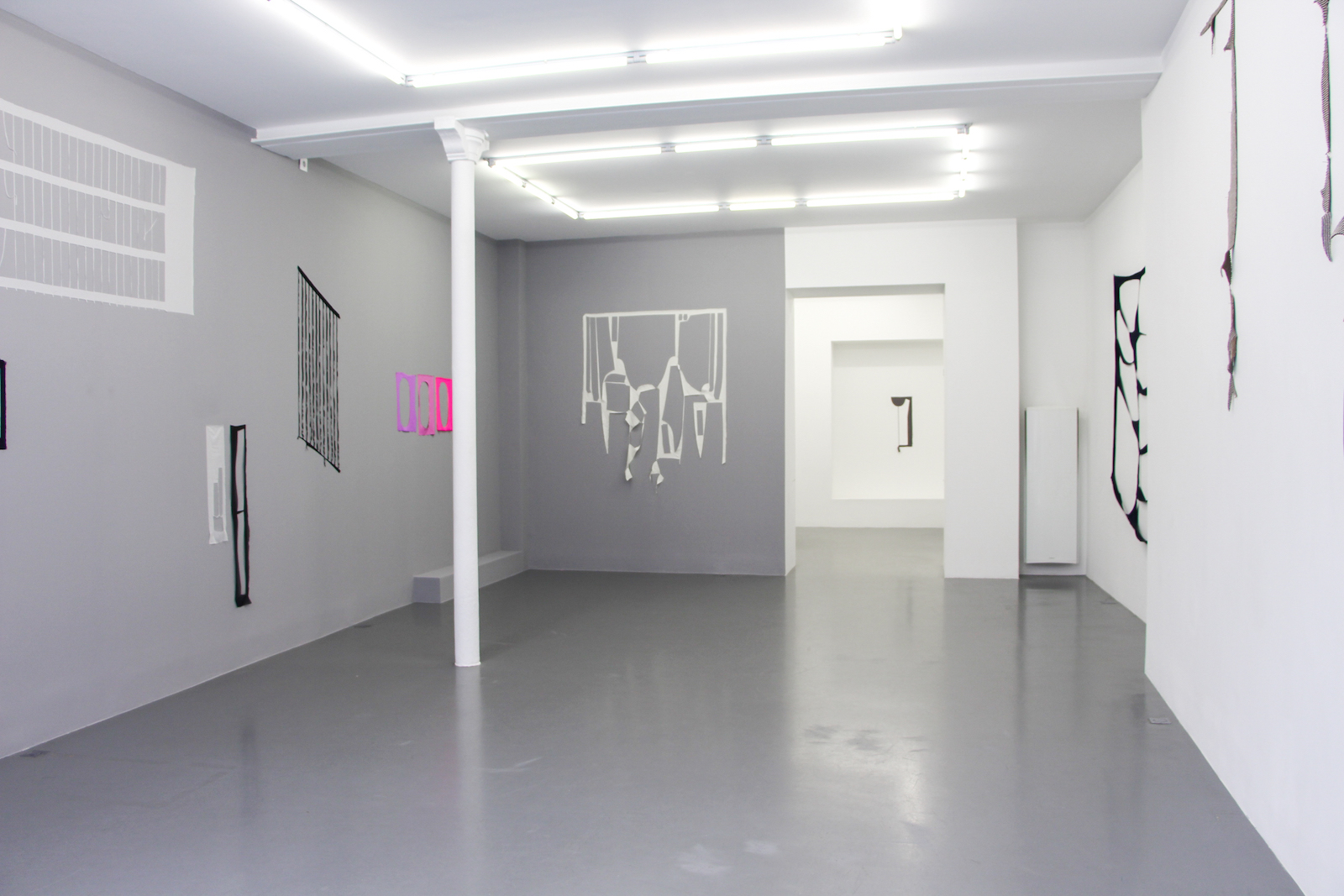


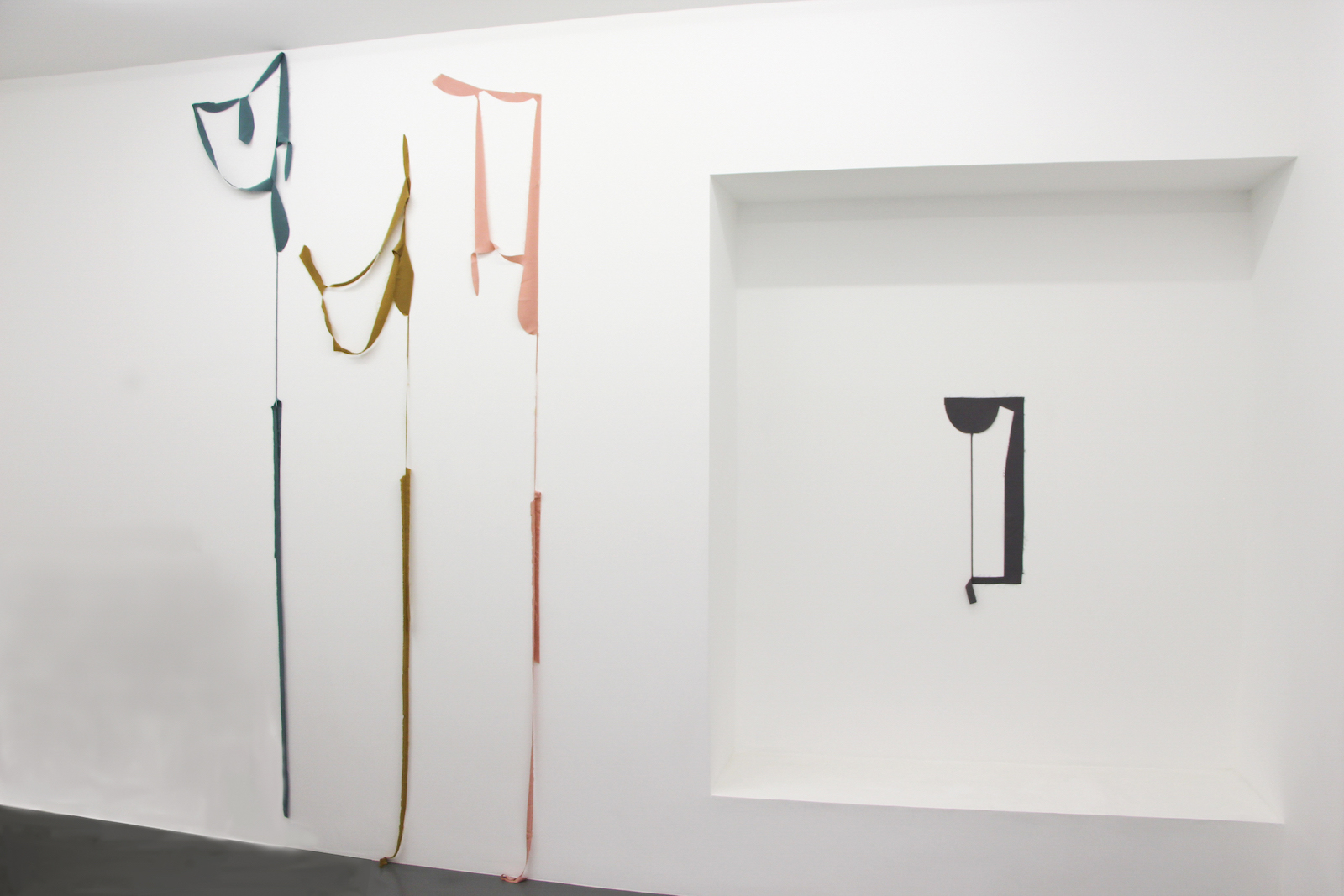
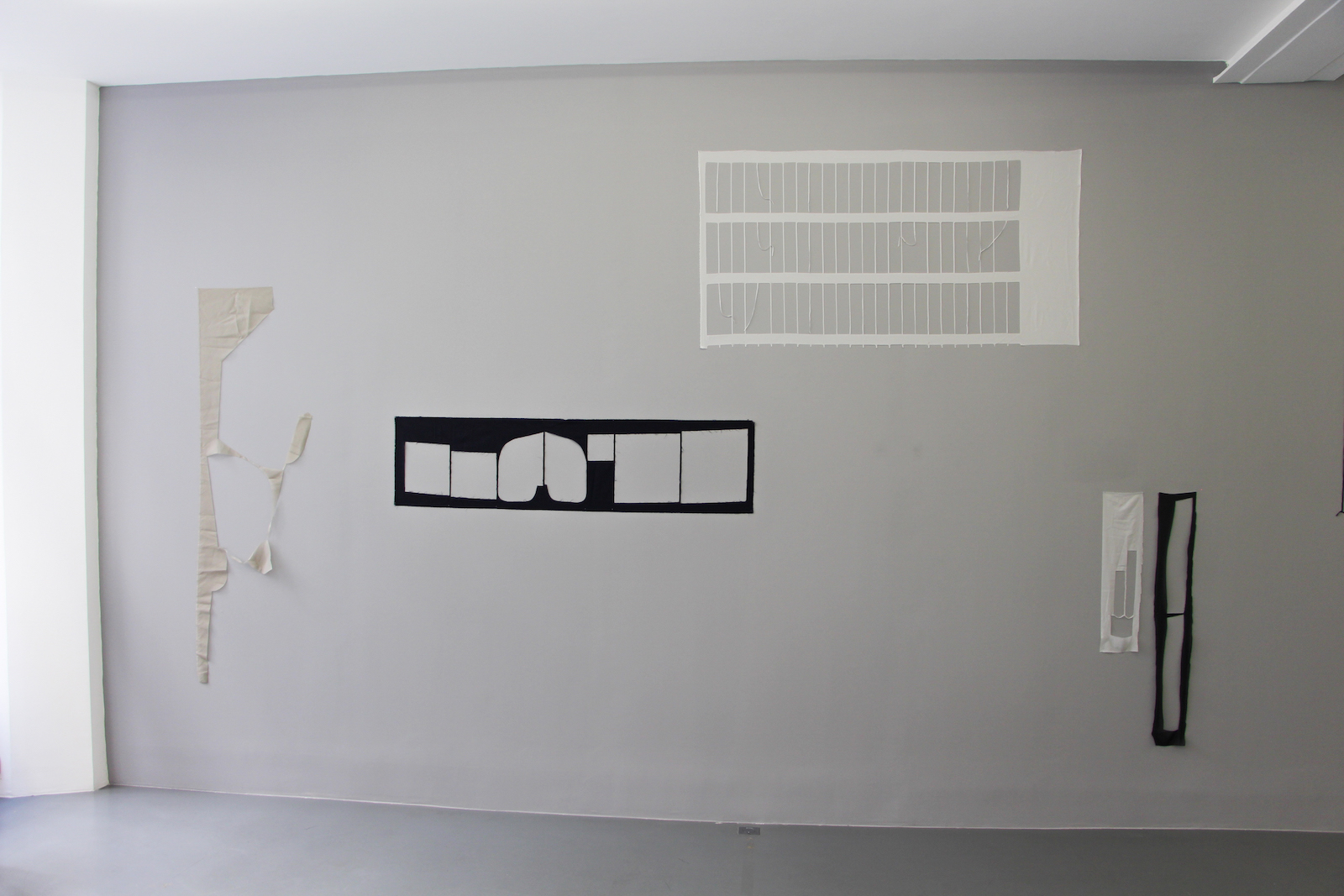
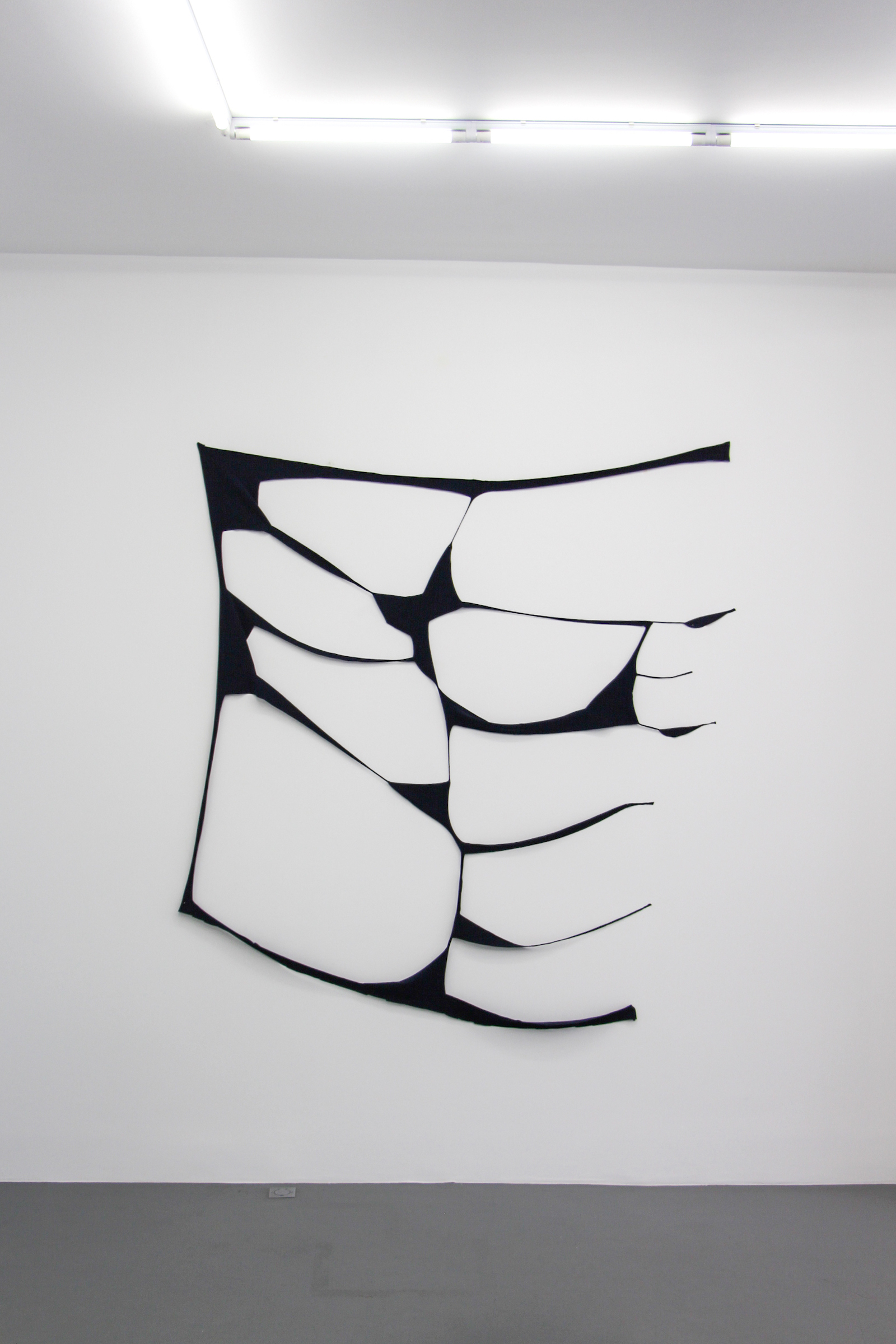
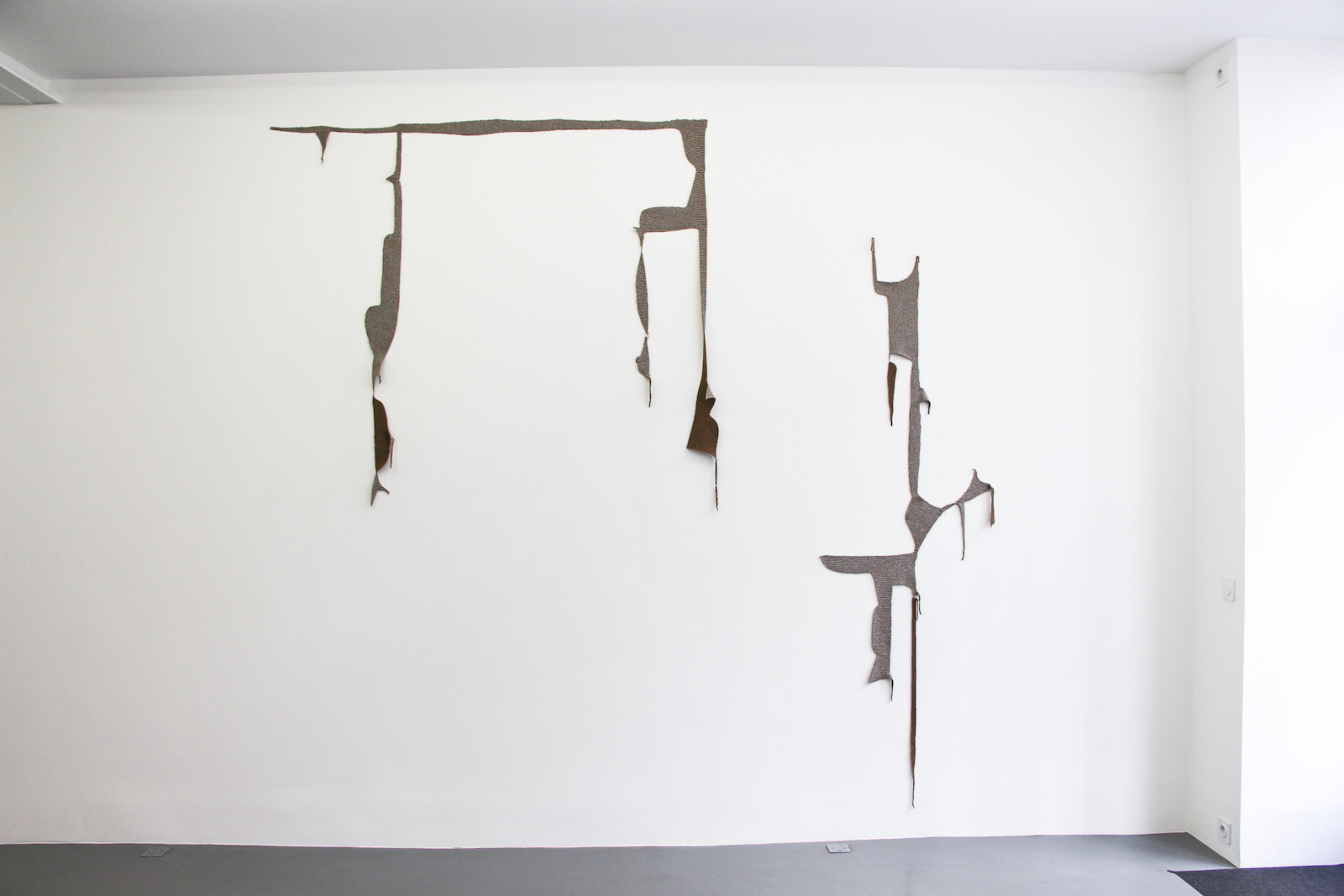
In dialogue with the first major museum retrospective devoted to the artist in several European countries, Marion Baruch's second solo show at the gallery focuses on her recent work with textile industry leftovers. The title of the exhibition is a tribute to Francis Ponge's La fabrique du pré. It alludes to the fragility of images and words. In her work, Marion Baruch never ceases to question and dialogue - often with humour - the ambiguities and interstices that crystallize in our representations and more particularly through language. Between free references to art history, allusions to imagined landscapes or work on the variation of forms, the pieces presented in this exhibition attempt to revisit the sensitivity of the world around us.